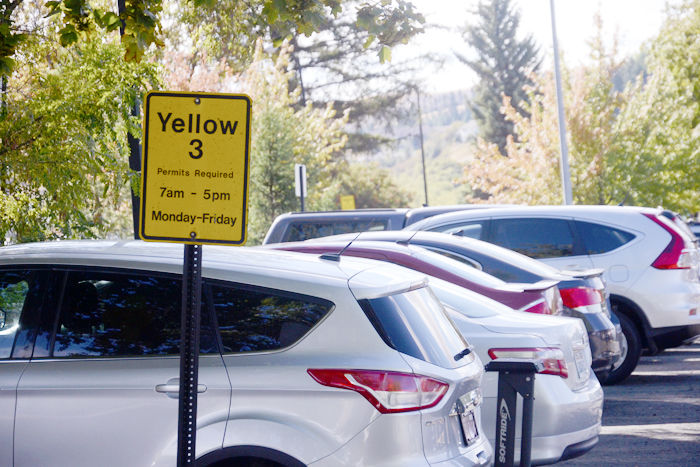Construction moves parking to outer edges of campus
September 23, 2016
The most sought out and expensive parking locations are usually in the center of the campus, but this may change with construction occurring on former parking structures in the center of campus, said Chris Boyan, assistant director of Transportation Services.
Several parking sites in the center of campus have been slated for construction of new buildings, such as the Chinook Student Center, Goertzen, Vogel buildings, and the School for Global Animal Health. Boyan said the losses in parking spaces have been absorbed by the construction of new lots farther off campus, and students’ parking needs will still be accommodated.
“Parking lots are good building sites; they’re level and graded,” Boyan said. “Generally when we lose space from the center of campus, we replace it farther out.”
Every parking system has an oversell rate, similar to that of airplane flight tickets, Boyan said. It’s unlikely that all permit holders are there at the same time because of students’ different schedules.
The industry standard for oversell is 30 percent, Boyan said, although WSU goes lower when selling permits. After an initial round of sales, surveys are done to assess open spaces in the lot during peak time, which Boyan says is 11 a.m. Monday through Thursday.
“Tuesday and Wednesdays, we go out and visibly look out at the parking system and see if we have any room,” he said. “If the number of open spaces allows us to, we will allocate from our waiting list to sell parking permits.”
He emphasized that the permits are flexible and give students access to zones, which means they have the option of parking in several lots as opposed to a single location.
“That means people are preferring to buy a higher priced permit,” Boyan said. “The zone system allows people to select a parking system that meets their needs and budget.”
A trend Boyan noted was that to date, although they sold the same amount of permits, more zones closer to the center of campus have sold out quicker. Additionally, there is a surplus of parking spaces that students are more reluctant to use because they are less-than-ideal locations on the edge of campus.
Students, he said, are encouraged to embrace eco-friendly alternatives, such as walking, green bikes or Pullman Transit buses.
“(The bus system) gives over a million rides a year,” Boyan said. “Can you imagine if every single one of those riders wanted to park their cars here?”





















